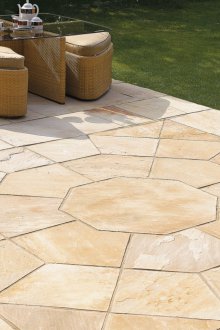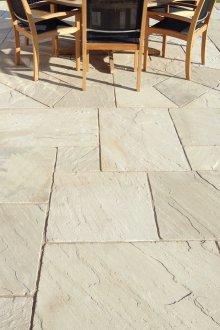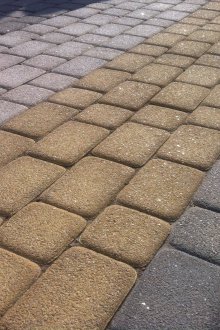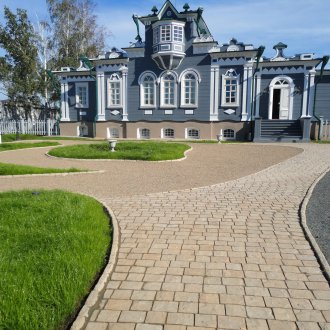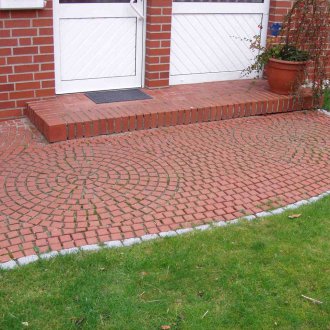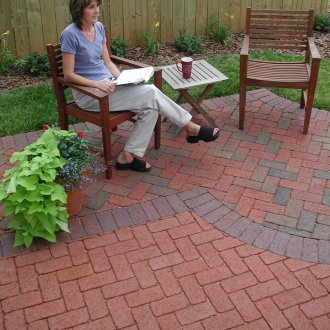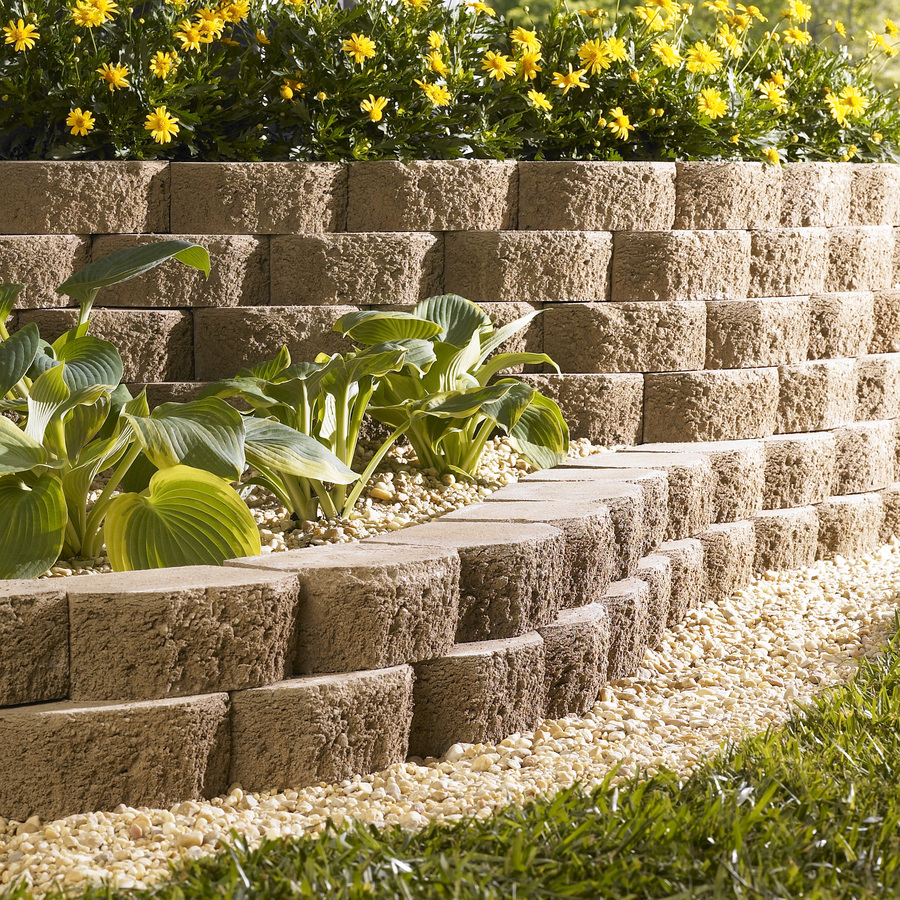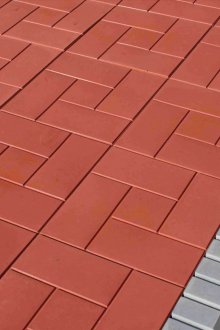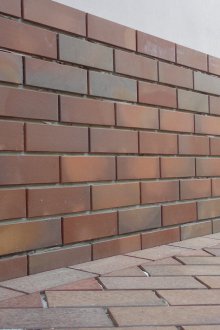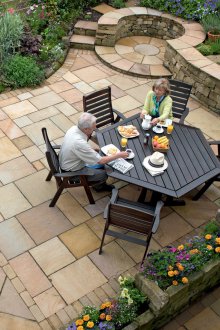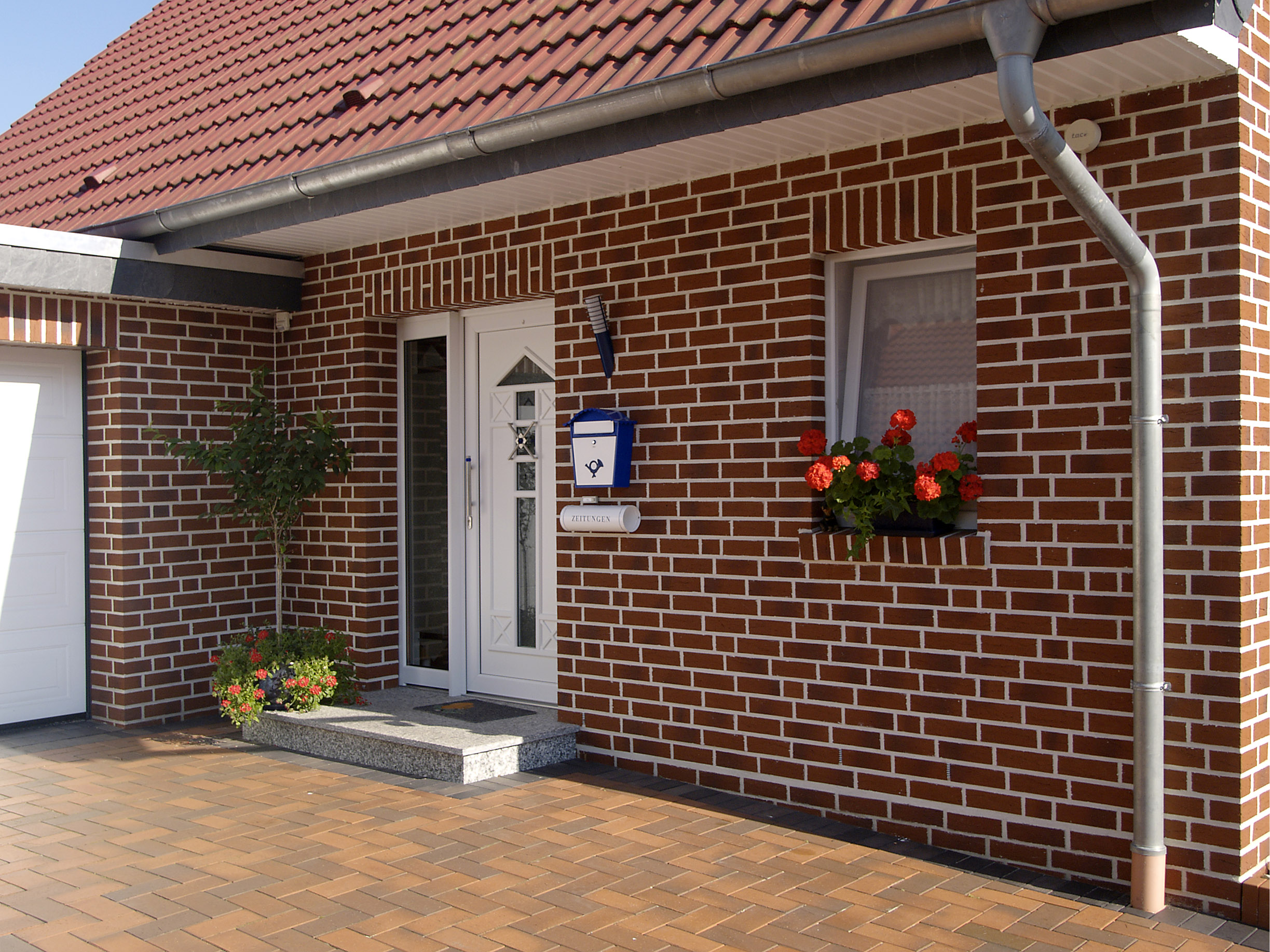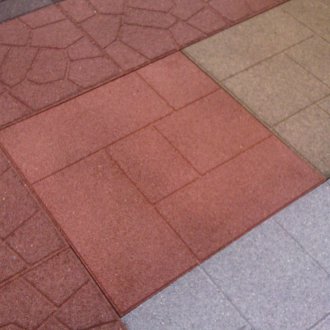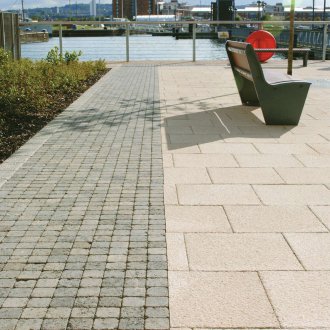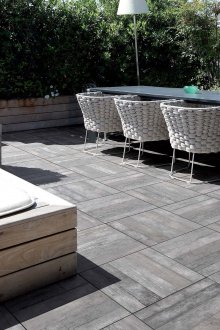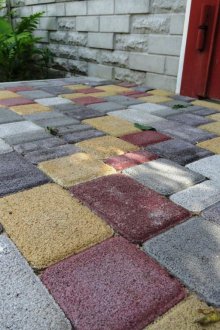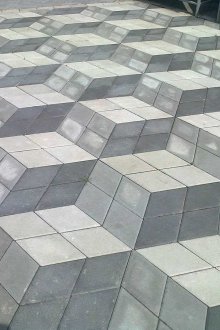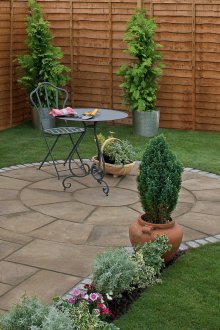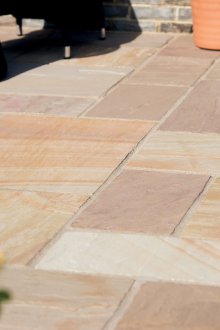Sand tiles: features, advantages, applications (23 photos)
Content
Sand is one of the most common and affordable building materials. It is used as a mineral filler in the production of cement mortars, dry building mixes, and silicate brick. By weight and volume, sand makes up the bulk of the foundation blocks, floor slabs, reinforced concrete panels. Sand is also filled with a wide range of tile materials used for laying on sidewalks and platforms. In this case, cement or polymer masses are used as a binder. Sand tiles are produced in a wide assortment; these products are notable for their affordable price and simple manufacturing technology. Tiles are produced by both large factories of building materials and small companies.
Features of the production of polymer-sand tiles
The rapid development of the chemistry of polymer materials has led to the fact that plastic objects surround us everywhere. They differ in such a low price that many things are considered to be disposable. As a result, a huge amount of polymeric materials that can be recycled are accumulated at landfills. One of these areas of use is the production of polymer sand tiles. Its main component is sand, an inexpensive material characterized by high performance.
Modern polymer-sand tile for 75% consists of sand. The remaining 25% is crushed polymers, to which a small amount of dye is added.
Polymer-based sand tiles are produced in several ways:
- vibrocompression;
- vibration casting;
- hot pressing.
All methods make it possible to obtain products that are distinguished by excellent practical characteristics.
The main advantages that polymer-sand paving slabs have are:
- high strength and wear resistance;
- the minimum number of pores provides the material with a low coefficient of water absorption;
- resistance to temperature extremes and severe frosts;
- resistance to various types of fuel and engine oils;
- resistance to aggressive chemicals;
- long term of operation;
- light weight and easy installation;
- resistance to fading.
A wide range of sizes, colors and shapes provides tiles for use in the construction of facilities for various purposes.
How to choose a polymer sand tile?
When choosing a tile, you need to pay attention to a variety of parameters, the most important of which are:
- thickness - is directly dependent on the ability to withstand high loads. For the garden paths of a private house, the thinnest tile is suitable, it has an affordable cost, which helps to reduce the cost of landscaping. For pedestrian areas of parks and squares, parking lots in a private house, it is necessary to choose a tile of medium thickness. The thickest sand tiles are used in the arrangement of urban squares and sidewalks;
- color saturation - juicy shades of tiles give high-quality dyes of European production, which practically do not fade in the sun;
- anti-slip surface - if it is planned to lay polymer-sand tiles on a site that is covered with snow in winter, you can opt for an inexpensive smooth tile. If you need material for installation in front of the house, where snow is traditionally cleaned, it is better to choose a tile with a corrugated surface;
- shape - collections of not only rectangular, but also complex shapes are produced. The choice is determined by the features of landscape design. Do you plan to lay the tiles yourself and do not have experience in such work? Choose your rectangular tile.
A competent choice will allow for as long as possible to operate sites and tracks lined with polymer-sand tiles.
Cement and sand tiles: affordable and practical
Before the advent of inexpensive polymeric materials, cement was the main binder in the production of sand tiles. Sand paving slabs were made by pressing, while the quality of the products left much to be desired. The appearance of vibration equipment has allowed to reduce the water absorption of the material, to make it more durable and practical. During the manufacturing process, pigments are added to the mixture, due to which tiles of any color can be made. The technologies are identical to the production of paving stones, but less deep forms are used in the work.
Among the main advantages of cement-sand tiles:
- affordable price;
- a wide range of tiles with different surface textures;
- simple styling;
- resistance to temperature extremes.
Unlike polymer-sand cement-sand tile has lower wear resistance. This material is recommended for landscaping a personal plot of a private house. Paths and paths, open areas here have small loads, which can significantly extend the life of the material. Its use is a real opportunity to significantly reduce the cost of arranging your site.
Features of tile technology
Sand paving slabs are laid in one of two ways: on a sand or crushed stone base. Both methods involve preparing the site - soil is removed to a depth of 20 cm, the bottom is leveled and compacted. Be sure to form grooves for installing borders. When using sand as a base, work is carried out in several stages:
- Curbs are installed.
- Geotextiles are laid at the bottom of the prepared site.
- Sand is poured 3-5 cm, it is leveled and spilled with water, then the next layer is filled.
- Directly the tile is laid on a flat base of sand and leveled by uniform strokes of a rubber hammer. The size of the seam between the tiles is 3-5 mm.
- After completion of work, the tile is filled with sand, which fill the tile joints.
When laying tiles in places with high walking intensity, the last layer of the base has a different structure. A reinforcing mesh is used, onto which a dry mixture of sand and cement is poured in a ratio of 3: 1. It is slightly moistened and after that the tile is laid on the base.
When laying on the base of crushed stone after installing curbs, crushed stone fractions of 20-40 mm are poured. It is carefully compacted and leveled, after which a screed 50-70 mm thick is poured. After curing, you can lay the tiles, for this use cement mortar or tile glue for outdoor use. The thickness of the adhesive layer should be 2-3 cm. The size of the tile joints 3-5 mm, they are also covered with sand and rubbed with a stiff brush. After completion of work, the remains of glue or cement mortar are immediately removed from the tile surface, and the entire area is spilled with water to compact sand in the joints.
Cement-sand and polymer-sand tiles are a good choice for landscaping. This material is used on terraces, barbecue areas, garden paths and parking lots, sidewalks. To equip areas with a small load, cement-sand tiles are used. When designing sites with high traffic it is better to use polymer-sand tiles, which can also have an anti-slip surface and is characterized by maximum resistance to temperature extremes and high humidity. For self-installation, collections of a rectangular shape are the best option, professionals can use complex tiles. A wide range of products allows you to choose the tile in accordance with the budget.
